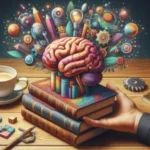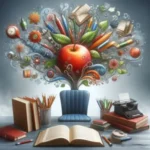In an age brimming with information, the ability to absorb, understand, and retain what you read is more critical than ever.
Whether you’re a student striving for academic excellence, a professional looking to stay ahead in your field, or simply a book lover aiming to savor every word, enhancing your reading comprehension and retention can transform your learning experience. Yet, many find themselves struggling to grasp complex texts or to remember key details after turning the last page. Fear not! In this blog post, we will unlock the secrets to effective reading strategies that will not only deepen your understanding but also boost your memory retention. From active reading techniques to the power of summarization and visualization, get ready to discover practical tips that will elevate your reading journey and help you truly connect with the material, making every reading session an enriching adventure.
1. Understanding Reading Comprehension: What It Is and Why It Matters

Reading comprehension is the ability to process text, understand its meaning, and integrate it with what you already know. It’s more than just deciphering words on a page; it involves interpreting nuances, grasping the overall theme, and making connections between ideas. This intricate skill is fundamental not only in academic settings but also in everyday life, influencing how we absorb information, engage with literature, and interact with the world around us.
At its core, reading comprehension is a dynamic cognitive process that encompasses several key elements. First, there’s decoding—recognizing words and phrases. Then comes fluency, where the reader can read smoothly and with appropriate speed. Finally, there’s the critical stage of comprehension itself, where the reader must synthesize information, draw inferences, and reflect on the text’s implications. This multi-layered approach ensures that readers are not just passively consuming content, but actively engaging with it.
Understanding why reading comprehension matters is crucial for anyone looking to enhance their learning abilities. Strong reading comprehension skills empower you to analyze complex materials, whether you’re tackling a challenging textbook, enjoying a novel, or sifting through reports at work. This skill also fosters better retention of information, allowing you to recall and apply what you’ve read more effectively. In a world overflowing with information, being able to discern what’s important and retain that knowledge can set you apart, both academically and professionally.
Ultimately, improving reading comprehension is not just about enhancing academic performance; it’s about enriching your life. It opens the door to new ideas and perspectives, enhances critical thinking, and fosters a deeper appreciation for literature and the written word. By recognizing the significance of reading comprehension, you’ll be inspired to develop strategies that not only boost your understanding but also transform your reading experience into a more rewarding journey.
2. The Importance of Active Reading
Active reading is an essential technique that transforms the reading experience from a passive activity into an engaging intellectual endeavor. Unlike traditional reading, where words may blur together in a haze of monotony, active reading demands your full attention and participation. This method encourages you to interact with the text, fostering a deeper understanding and retention of the material.
To practice active reading, begin by previewing the content before diving in. Skim through headings, subheadings, and any highlighted or bolded text. This previewing phase primes your brain for the information ahead, creating a mental roadmap of what to expect. As you read, make a conscious effort to ask questions about the material. What is the author’s main argument? What evidence supports this claim? How does this information relate to what you already know? Engaging with the text in this manner not only enhances comprehension but also encourages critical thinking.
Annotating is another powerful aspect of active reading. Use a pen or highlighter to underline key points, jot down notes in the margins, or summarize paragraphs in your own words. This tactile interaction with the text reinforces memory retention, as it allows you to process the information in multiple ways. Additionally, consider discussing the material with others or teaching it to someone else. Explaining concepts out loud reinforces your understanding and solidifies your grasp on the content.
Finally, don’t forget to take breaks. Continuous reading can lead to fatigue, making it harder to absorb information. Short breaks allow your mind to rest and process what you’ve read, enhancing overall retention. By incorporating these active reading strategies into your routine, you’ll find yourself not only understanding the material on a deeper level but also retaining it longer, making reading a more enriching and productive experience.
3. Setting the Right Environment for Reading

Creating an optimal reading environment is crucial for enhancing comprehension and retention. The space where you choose to read can significantly impact your ability to focus and absorb information. Ideally, your reading nook should be quiet, free from distractions, and conducive to concentration.
Start by selecting a comfortable chair or a spot where you can sit upright with good posture. Adequate lighting is essential; natural light is best, but if that’s not available, ensure your reading area is well-lit to prevent eye strain. Soft, ambient lighting can create a cozy atmosphere, making it easier to immerse yourself in the text.
Minimize distractions as much as possible. This might mean putting your phone on silent, closing unnecessary tabs on your computer, or even using noise-canceling headphones to drown out external sounds. Some people find that soft instrumental music or white noise can enhance their focus, while others prefer complete silence.
Incorporating elements that stimulate your senses can also enhance your reading experience. Consider keeping a cup of tea or a light snack nearby to keep your energy levels up. Some readers benefit from having a notepad handy to jot down thoughts or questions that arise during their reading.
Lastly, the emotional tone of your environment matters. Surround yourself with items that inspire you, whether it’s a motivational quote on the wall, a shelf filled with your favorite books, or even plants that bring a touch of nature indoors. When your reading space feels inviting and personalized, you’ll be more likely to settle in and engage deeply with the material, ultimately boosting your comprehension and retention.
4. Pre-Reading Strategies: Preparing for Success
Before diving into the text, implementing pre-reading strategies is crucial for enhancing both comprehension and retention. These techniques act as a mental warm-up, setting the stage for a more fruitful reading experience.
Start by previewing the material. Glance through headings, subheadings, and any highlighted or bolded terms to get a sense of the main ideas and structure of the content. This initial overview allows your brain to create a framework, making it easier to fit new information in as you read.
Next, engage in a bit of background research. If you’re tackling a complex topic, take a moment to familiarize yourself with key concepts, terminology, or historical context related to the material. This preparatory step will equip you with the necessary knowledge to understand nuances and deeper meanings that may arise during your reading.
Another effective pre-reading strategy is to set a purpose for your reading. Ask yourself what you hope to gain from the material. Are you reading for a specific detail, to gather general knowledge, or to analyze arguments? By establishing clear objectives, you can focus your attention and filter out distractions, making it easier to retain the information that matters most.
Finally, consider jotting down questions or predictions about the text before you begin. What do you expect to learn? What questions do you hope will be answered? This active engagement primes your brain for discovery and creates a sense of curiosity, which can significantly enhance your motivation and retention as you navigate through the text.
By incorporating these pre-reading strategies, you not only prepare yourself for success but also cultivate a more enriching reading experience that boosts your comprehension and retention long after you’ve turned the final page.
5. Techniques for Annotating and Taking Notes

Annotating and taking notes are essential techniques that can significantly enhance your reading comprehension and retention. When you engage with a text actively, you’re not just passively consuming information; you’re interacting with it, questioning it, and making it your own. Here are some effective strategies to elevate your annotation and note-taking skills.
**1. Use the Margins Wisely:** As you read, jot down your thoughts, questions, or reactions in the margins of the text. This could be a simple “I agree,” “What does this mean?” or “This reminds me of…” This practice helps you process the material in real-time and creates a dialogue between you and the author.
**2. Highlight with Purpose:** Instead of indiscriminately highlighting entire passages, focus on key phrases, concepts, or arguments. Use different colors to signify different types of information—perhaps one color for main ideas, another for supporting details, and a third for examples. This visual differentiation can make reviewing your notes later much more intuitive.
**3. Summarize Sections:** After finishing a chapter or a significant section, take a moment to write a brief summary in your own words. This reinforces what you’ve just read and helps solidify your understanding. Additionally, summarizing forces you to distill the material down to its essence, which can be invaluable for retention.
**4. Create Mind Maps:** For visual learners, mind mapping can be an effective note-taking strategy. Start with the main idea at the center of your page and branch out with related concepts, facts, and arguments. This graphical representation of information can help you see connections and relationships, enhancing your overall understanding.
**5. Develop a Personal Code:** Establish symbols or abbreviations that make sense to you. For instance, you might use an asterisk for important points, a question mark for areas of confusion, or a triangle for ideas you want to explore further. This coding system will speed up your note-taking process and make it easier to review your annotations.
**6. Review Regularly:** Don’t let your notes gather dust! Set aside time to review your annotations regularly. This could be weekly or bi-weekly, depending on your reading pace. Revisiting your notes helps reinforce your memory and encourages deeper engagement with the material over time.
By incorporating these annotation and note-taking techniques into your reading routine, you’ll not only improve your comprehension but also enhance your ability to recall and apply the information you’ve learned. Each method allows you to tailor your approach to your personal learning style, ensuring a more enriching and effective reading experience.
6. Enhancing Vocabulary for Better Understanding
Enhancing vocabulary is a powerful tool for boosting reading comprehension and retention. A rich vocabulary allows you to grasp the nuances of language, making it easier to understand complex texts and engage deeply with the material. When you encounter unfamiliar words, instead of skimming past them or guessing their meanings, take the time to look them up. Not only will this practice clarify your current reading, but it will also expand your lexicon for future encounters.
One effective method for enhancing your vocabulary is to keep a personal vocabulary journal. Whenever you come across a new word, jot it down along with its definition and an example sentence. This active engagement helps reinforce your understanding and makes it more likely that you’ll remember the word later. You can also categorize words by themes or subjects, creating a personalized reference that aligns with your reading interests.
Additionally, consider using vocabulary-building apps or flashcards that turn learning into a fun, interactive experience. These tools often employ spaced repetition, which reinforces your memory over time, ensuring that newly learned words stick. Reading widely across different genres—be it fiction, non-fiction, or academic articles—also exposes you to diverse vocabulary in context, enhancing your ability to decipher meanings based on surrounding words.
Furthermore, engaging in discussions about what you read can solidify your understanding and help you articulate your thoughts more clearly. As you incorporate new vocabulary into your conversations and writing, you not only enhance your understanding but also develop a more expressive and nuanced communication style. By prioritizing vocabulary enhancement, you pave the way for a richer reading experience, leading to improved comprehension and retention of the material you consume.
7. Summarization: The Key to Retention

Summarization: The Key to Retention
In the whirlwind of information that we encounter daily, the ability to distill complex ideas into concise summaries is a skill that can significantly enhance your reading comprehension and retention. At its core, summarization involves taking the main ideas from a text and distilling them into a more digestible form. This process not only reinforces your understanding but also creates a mental framework for the material, making it easier to recall later.
To effectively summarize, start by identifying the central themes and key points of the text. As you read, take notes on important concepts, arguments, and examples that resonate with you. Once you’ve gathered your thoughts, challenge yourself to express these ideas in your own words, ideally in a few sentences or bullet points. This exercise forces you to engage with the material actively, enhancing your grasp of the subject matter.
Consider creating a summary after each chapter or section you read. This practice encourages reflection and allows you to track your understanding as you progress through the material. Additionally, reviewing your summaries periodically helps reinforce the information in your memory, transforming fleeting knowledge into lasting retention.
Incorporating summarization into your reading routine can be particularly beneficial for complex texts or subjects that require deep understanding. Whether you’re tackling a dense academic article, a challenging novel, or a comprehensive report, the act of summarizing will not only clarify your thoughts but also empower you to engage more meaningfully with the content. So, the next time you dive into a book or an article, remember: summarization is not just a technique; it’s a powerful tool for unlocking the full potential of your reading experience.
8. Visualization Techniques for Improved Recall
Visualization techniques can be incredibly powerful tools for enhancing reading comprehension and retention. The human brain is wired to remember images better than words, and by converting text into vivid mental pictures, you can significantly improve your ability to recall information later.
As you read, take a moment to pause and create a mental image of what you’re absorbing. If you’re diving into a historical text, imagine the scene unfolding in your mind: the sounds of the bustling market, the colors of the clothing worn by the people, or even the expressions on their faces. By immersing yourself in these sensory details, you create a more meaningful connection to the material.
Another effective technique is to use mind mapping. This involves drawing a diagram that represents the key concepts and relationships found in the text. Start with the main idea at the center and branch out to subtopics, using colors and symbols to differentiate between themes. This not only helps you visualize the structure of the information but also aids in organizing your thoughts, making it easier to retrieve them later.
You might also consider using mnemonic devices, where you associate complex information with simple images or phrases. For example, to remember a list of items, create a story or a vivid scene that incorporates all the elements. The more outrageous or colorful the imagery, the better it will stick in your mind.
Incorporating these visualization techniques into your reading routine can transform the way you engage with texts, making the process not only more enjoyable but also far more effective. By turning words into images, you create a mental library where information is not just stored but vividly alive, ready to be accessed whenever you need it.
9. The Role of Discussion in Deepening Comprehension
Discussion plays a pivotal role in deepening comprehension and enhancing retention of the material you read. Engaging in conversations about a text allows you to process and internalize the information on a much deeper level. When you articulate your thoughts and insights, you actively reconstruct the ideas presented in the reading, which can clarify your understanding and expose any gaps in your knowledge.
Consider joining a book club or study group where participants share their interpretations and reactions to the material. This collaborative environment fosters diverse perspectives and encourages critical thinking, as you might encounter viewpoints that challenge your own. Through this dialogue, you not only reinforce what you’ve learned but also develop a richer appreciation for the nuances within the text.
Moreover, discussing a book or article can help you to synthesize information and make connections to other readings or real-life experiences. This interconnectedness not only aids memory recall but also enhances your ability to apply the concepts in various contexts. Whether it’s a casual chat with a friend or a structured classroom debate, the act of discussing what you’ve read solidifies your grasp on the subject matter.
Incorporating discussion into your reading routine is not just beneficial; it’s a transformative practice that turns passive reading into an active learning experience. So, the next time you dive into a new book or article, consider reaching out to others to share your thoughts and insights. You’ll find that the act of discussion can unlock new layers of understanding and make your reading journey all the more rewarding.
10. Practicing Mindfulness While Reading
Practicing mindfulness while reading can transform your engagement with texts and significantly enhance your comprehension and retention. In our fast-paced world, distractions abound, making it all too easy to skim through pages without truly absorbing the content. Mindfulness, at its core, is about being fully present in the moment, and applying this principle to your reading can foster a deeper connection with the material.
To begin, find a quiet space where you can minimize interruptions. As you settle in, take a few deep breaths to center yourself. With each inhalation, allow your mind to release any lingering thoughts or distractions. Once you feel grounded, approach your reading with an open heart and a curious mindset.
As you read, pay close attention to the words and the emotions they evoke. Rather than racing to the end, savor each sentence and allow yourself to reflect on what you’ve read. Pause occasionally to consider the implications of certain passages or to visualize the scenes described. This active engagement fosters a richer understanding and allows the material to resonate on a deeper level.
Additionally, integrating mindfulness techniques such as highlighting or note-taking can enhance your focus and retention. Write down key points or insights that strike you as significant, which not only reinforces your memory but also creates a personal dialogue with the text. At the end of your reading session, take a moment to summarize what you’ve learned, either mentally or in writing. This reflection solidifies the information in your memory and enhances your overall comprehension.
Incorporating mindfulness into your reading practice not only improves your comprehension but also makes the experience more enjoyable and fulfilling. By fully immersing yourself in the narrative or argument, you unlock layers of meaning that might otherwise go unnoticed, transforming reading from a simple task into an enriching journey of discovery.
11. Utilizing Technology and Apps for Reading Improvement
In today’s fast-paced digital age, technology offers a wealth of resources that can significantly enhance your reading comprehension and retention. With a myriad of apps and tools at your fingertips, you can transform the way you approach reading, making it not only more engaging but also more effective.
One of the most popular categories of reading improvement apps is speed reading tools. Applications like Spreeder and Blinkist allow you to consume content at a faster pace by highlighting key phrases and displaying text in a way that minimizes eye movement. These tools not only help you read more quickly but also encourage you to focus on the main ideas rather than getting bogged down by every word.
In addition to speed reading, note-taking apps like Evernote or Microsoft OneNote can be invaluable for summarizing and organizing your thoughts. As you read, you can jot down important points, questions, or insights, which aids in processing and retaining the information. Many of these apps also allow you to tag and categorize your notes, making it easier to revisit and review them later.
Audiobooks and text-to-speech technology are also excellent resources for enhancing comprehension. Platforms like Audible or Google Play Books let you listen to books while following along with the text. This multisensory approach can help reinforce understanding and improve retention, especially for auditory learners.
Lastly, consider using online reading platforms like Goodreads or Blinkist that not only provide access to a vast array of reading materials but also offer community features where you can interact with fellow readers. Engaging in discussions, sharing insights, and even asking questions can deepen your understanding and make the reading experience more collaborative.
By harnessing the power of these technological tools and apps, you can unlock new ways to engage with texts, improve your comprehension skills, and retain information more effectively. Embrace the digital age and watch your reading abilities soar!
12. The Importance of Regular Reading Habits
Establishing regular reading habits is one of the cornerstones of enhancing your reading comprehension and retention. Just as a musician practices daily to master their craft or an athlete trains consistently to improve performance, committing to a steady reading routine can dramatically transform your ability to absorb and understand information.
When you carve out time each day—or even several times a week—to engage with texts, you create a rhythm that helps your brain adapt to processing information more effectively. This doesn’t mean you need to read for hours on end; even just 20 to 30 minutes a day can make a significant difference. The key is consistency. Whether you’re diving into fiction, non-fiction, articles, or academic papers, the act of reading regularly trains your brain to focus, enhances vocabulary, and improves critical thinking skills.
Moreover, regular reading exposes you to a variety of writing styles and perspectives, broadening your understanding and helping you draw connections between different ideas. This exposure not only enriches your comprehension but also equips you with the tools to analyze and synthesize information when you encounter it.
Incorporating reading into your daily life can be as simple as setting aside a specific time each day—perhaps during your morning coffee, on your commute, or before bed. You can also diversify the materials you consume, alternating between genres and formats to keep your mind engaged. As you make reading a habit, you’ll find that comprehension and retention become more instinctive, leading to a deeper appreciation for the written word and a more enriching reading experience overall. So, grab that book, carve out some time, and unlock the incredible benefits of a dedicated reading practice!
13. Assessing and Tracking Your Progress
Assessing and tracking your progress is a pivotal step in enhancing your reading comprehension and retention. Without a clear understanding of where you stand, it can be challenging to identify areas for improvement and to celebrate your successes along the way. By implementing a structured approach to self-assessment, you can gain valuable insights into your reading habits and cognitive growth.
Start by setting specific, measurable goals for your reading sessions. These could range from the number of pages you aim to read each day to the depth of understanding you want to achieve with each text. After completing a book or article, take the time to reflect on what you’ve learned. Ask yourself questions such as: What key concepts stood out? Were there any sections that confused you? How does this material connect to what I’ve read before? Keeping a reading journal can be an effective way to document your thoughts and insights, providing a personal reference that highlights both your progress and areas needing attention.
In addition to self-reflection, consider utilizing tools like comprehension quizzes or summary exercises. Many online platforms offer interactive reading assessments that can test your understanding of the material and reinforce your learning. Tracking your results over time will not only illustrate your improvements but also motivate you to continue refining your skills.
Lastly, don’t hesitate to share your reading journey with others. Joining a book club or engaging in discussions with fellow readers can provide external perspectives and enhance your comprehension. By assessing and tracking your progress, you’ll cultivate a deeper relationship with the texts you read, transforming reading from a solitary activity into a dynamic and rewarding experience. Embrace this practice, and watch your reading skills flourish!
14. Overcoming Common Reading Challenges
Reading is a fundamental skill that opens doors to knowledge, creativity, and understanding. However, many readers encounter common challenges that can hinder their comprehension and retention. Recognizing and addressing these obstacles is crucial for enhancing your reading experience.
One prevalent challenge is **distractions**. In our fast-paced, technology-driven world, it’s easy to lose focus with notifications pinging or background noise buzzing. To overcome this, create a dedicated reading environment. Find a quiet space, set your phone to silent, and consider using noise-canceling headphones or soft instrumental music to immerse yourself in the text.
Another common issue is **pacing**. Some readers rush through paragraphs, eager to finish, while others may linger too long on difficult passages. To strike a balance, practice **chunking** your reading material. Break down texts into manageable sections, allowing yourself to digest smaller pieces of information before moving on. This approach not only improves comprehension but also helps prevent fatigue.
Additionally, many readers struggle with **vocabulary limitations**. Encountering unfamiliar words can disrupt the flow of reading and lead to frustration. Combat this by keeping a vocabulary journal. Write down new words, their definitions, and examples of how they’re used in context. Regularly reviewing and incorporating these words into your conversations can expand your vocabulary and enhance your understanding of complex texts.
Lastly, **lack of engagement** can be a significant roadblock. If a text feels dull or irrelevant, your mind may wander, resulting in poor retention. To combat this, connect with the material on a personal level. Ask yourself questions about the content, relate it to your experiences, or discuss it with others. Engaging in active reading techniques, such as highlighting key points or taking notes, can also spark your interest and deepen your understanding.
By recognizing these common reading challenges and employing strategies to overcome them, you can unlock the full potential of your reading abilities, paving the way for improved comprehension and retention. Remember, reading is not just about the words on the page; it’s about the journey of understanding and discovery that unfolds with each turn of the page.
15. Conclusion: Making Reading a Lifelong Skill
In conclusion, making reading a lifelong skill is not just about improving comprehension and retention; it’s about fostering a deep-seated love for literature that can enrich your life in countless ways. As we navigate an increasingly digital world filled with distractions, committing to reading regularly can offer a sanctuary of focus and reflection. By implementing the strategies discussed—such as active reading, note-taking, and discussing what you’ve read with others—you’ll find that comprehension and retention become second nature.
Moreover, the benefits of reading extend beyond mere understanding of the text. Engaging with diverse genres and perspectives enhances empathy, broadens your worldview, and ignites creativity. Whether you’re diving into a thrilling novel, exploring a thought-provoking non-fiction piece, or immersing yourself in poetry, each page turned is an opportunity for personal growth and intellectual expansion.
To truly unlock the secrets of reading, make it a habit. Set aside dedicated time each day, create a cozy reading nook, or join a book club to connect with fellow readers. Embrace the journey of lifelong learning that reading offers, and watch as it transforms not just your understanding of the written word but your entire approach to learning and knowledge. Remember, each book is a new adventure waiting to be explored—so dive in, and let the magic of reading unfold.
As we conclude our exploration of effective strategies for enhancing your reading comprehension and retention, we hope you feel empowered to transform your reading experience. By implementing these practical tips—such as active engagement with the text, summarizing key points, and cultivating a conducive reading environment—you can unlock a deeper understanding and enjoyment of the material you encounter. Remember, reading is not just about consuming information; it’s about connecting with ideas and retaining knowledge that enriches your life. So, pick up that book, apply these techniques, and watch as your comprehension and retention soar to new heights. Happy reading!






